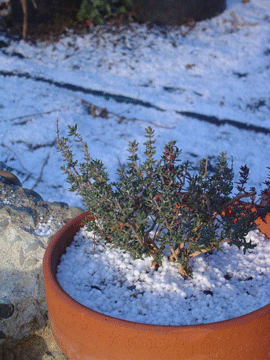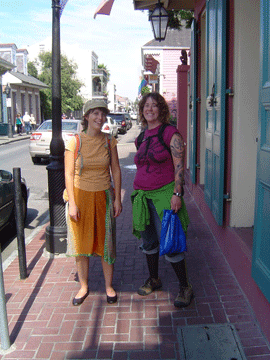
Late Summer 2010
This was a rather distracting autumn for us, and recently we realized that an important milestone had passed by without much fanfare, no champagne and little celebration: September 24th was our first anniversary of Buying the Farm.
For those of you who have followed our farm story for the long haul, you will know what a phenomenal moment that was in our lives. I remember sitting in the title company office with Packy and Sally ( our fabulous and very patient real-estate agent), Dan (the mortgage broker), and the very cheerful title company representative whose name I can't remember. Packy was covered in flour, having rushed away from the bakery for the appointment, and I only had so long before I had to head back to my Real Job too. We sat there signing reams of paperwork, each page going by in a blur of rapid explanations which were all, I am sure, very relevant but quite frankly could have been "and please sign here to indicate that you agree to give five pints of blood for every day that you are late with a payment" and it would have seemed just another weird thing we had to go through in order to Buy the Damn Farm.
This past year has been a struggle with the irony of our situation. We have attained a holy grail moment that many young and beginning farmers can only dream of: we actually managed to buy land to farm.
Of course, the only way we could manage to do that was to stop farming completely so that no where in our income stream would it say "farmer", because if it did, the bank would not loan us the money. We got 'Real Jobs', with paychecks. We made assurances that the only reason we wanted 18 acres of agricultural zoned land with a house and barn and outbuildings was because we just wanted to continue living a 'rural lifestyle'. Yep. I confess, it's true. Our fingers were crossed behind our backs, and you know what? I don't feel bad about that at all.
This home-loan route was our last resort. We'd tried to get a small business loan and been shot down by every bank we talked to, including the greenest, most theoretically eco-friendly, we-love-local-organic-agriculture bank around, The Bank That Must Not Be Named in our house. (I confess to not a small amount of schadenfreude at their recent troubles.)
We'd talked to the USDA about their small farm loans that don't actually seem to apply to farms as small and apparently non-farm-like as ours.
Our business plan was based on the farm we were operating at the time, selling edible plant starts, herbs and flowers. We were adding in produce, chickens-for-eggs, and on-farm workshops, all things we had been wanting to start on our old farm but were unable to begin due to our rental situation. All this was mixed with some seasonal off-farm income to make it all work financially, especially during our re-start up phase. Although what we were proposing was a completely normal modern small farm, not at all unlike most that you see at any farmers market you go to anywhere in the country, apparently the business we were proposing is what the USDA calls a 'Residential/Lifestyle Farm', something for which they don't give loans. If it hadn't been for the off-farm income, I think we could have qualified as one of their equally flattering other small farm descriptions, the 'Limited Resource Farm' or the 'Farming Occupation: Low Sales' farm.
If USDA Secretary Tom Vilsack is serious about the goal he threw out this past July of having 100,000 new farmers in the US in the next few years, one of the first things he could do is have his department describe the kinds of farms these new farmers are most likely to be operating with a bit more respect. How can you take a farm and its farmer seriously enough to loan it money for operations and equipment if you so obviously don't respect the work they are doing, or consider them 'Real Farms'? The benefits that small farms bring to their local communities are tangible, especially in rural areas where access to fresh food that doesn't come from a massive factory farm hundreds or thousands of miles away is often limited.
Small farmers like us choose to operate small farms not because we are slacker loosers who can't get it together to run a Real Farm, but because we actually prefer operating small farms. We don't aspire to grow thousands of acres of commodity crops or operate a CAFO, we don't want to take out massive loans to buy harvesting (or chemical spraying) equipment that is larger than our house, we don't want to Get Big or Get Out.
We want to stay small and diverse, grow healthy food for our local communities, strengthen our local economies and live a simple, good life that involves a lot of hard work and rewards that are things like "getting to work outdoors" "helping provide fresh healthy food to people who need and want it" and "doing something I love and believe in". Less corporate, more community.
Sure, we want to make a living at what we are doing by running a good business. We'd like to be able to pay ourselves more than slave wages, even minimum-wage would be nice to begin with. We'd like to have health insurance, access to low-interest loans and credit to help us operate effectively, and maybe we'd like to be able to afford to hire some local help, especially during harvest season. We'd love to have a retirement plan that wasn't just "keep working until you keel over, and hope that you're strategically located near the compost pile when you do to save on funeral costs".
These aren't extravagant aspirations. It's not like we're demanding that we should get massive government financial payments to ensure that the price we receive for our chemical-free locally grown produce always remains consistent. The free market seems to apply to some farms more than others in this country.
Our farm's best hope for USDA assistance that will help us produce food for our community is our EQUIP grant application with the National Resource Conservation Service. The grant will hopefully provide some funding assistance to allow us to build a much needed elk exclosure fence, and plant lots of native plants on our farm for pollinator habitat. It isn't free money- it comes with a lot of restrictions, and it also counts as income for our farm that we will then be taxed on, which for a small operation like ours can be a big deal. Still, any help that will get us back in operation is welcome at this point.
One thing that really struck me at the Community Food Security Cooalition conference I attended recently is that there was so much talk about the need to get more farmers on the land. Everyone wanted more locally grown fresh food for their farm-to-school and farm-to-institution programs, for their healthy community programs, for their food justice programs, for their healthy food system programs. "We've got to get more beginning farmers on the land!" was practically a battle cry. I think we can all agree on that. Hell, even the Secretary of Agriculture agrees.
But no one seems to really be able to tackle the sticky question of HOW. How do you do actually do that? How does it work financially? There is a lot of farmable land out there in America, most of it owned by people who are near or at retirement age. How does a beginning farmer with limited financial resources but who is willing to take on the incredibly hard job of growing food for people who either can't or won't grow food for themselves get access to one of those farmable pieces of land ? Access to land that they can either own or lease, or lease-to-own and that they can then afford to actually farm?!?
This question drives me crazy. I swear, as much as I want to get our farm off the ground again, I want to also work to find answers to those questions because I want our farm to exist within a greater community of diverse small farms operating all across our country. No farm is an island entire of itself, if I may paraphrase the long dead but still rather wise John Donne. (Although some small farms are located on islands.) What hurts or benefits one small farm can hurt or benefit us all. We need to stick together.
I celebrate our first anniversary of living on 46 North Farm– a year spent slowly, sloooooowly rebuilding our infrastructure to get started again, accomplishments that have only happened with a lot of support and help from friends and family. We got our greenhouse re-built, and lots of cover crop was sown. Some of it may even still be there in the spring to till under if the elk and deer are reasonably thoughtful. We have plans for next year that are starting to get me excited about farming again, in spite of the ongoing need for full time employment to make our loan payments.
I know how lucky we are to be in this position, living on a beautiful piece of land that we can actually make long term plans for. We have the rest of our lives to make this farm work, and as long as we are moving forwards, then we're heading in the right direction.
We offer heartfelt thanks to everyone who has helped us get as far as we have. You all know who you are. We couldn't have gotten as far as we have without you- you are the best community of family and friends a farmer could hope for.
Happy Anniversary, 46 North Farm.






















































